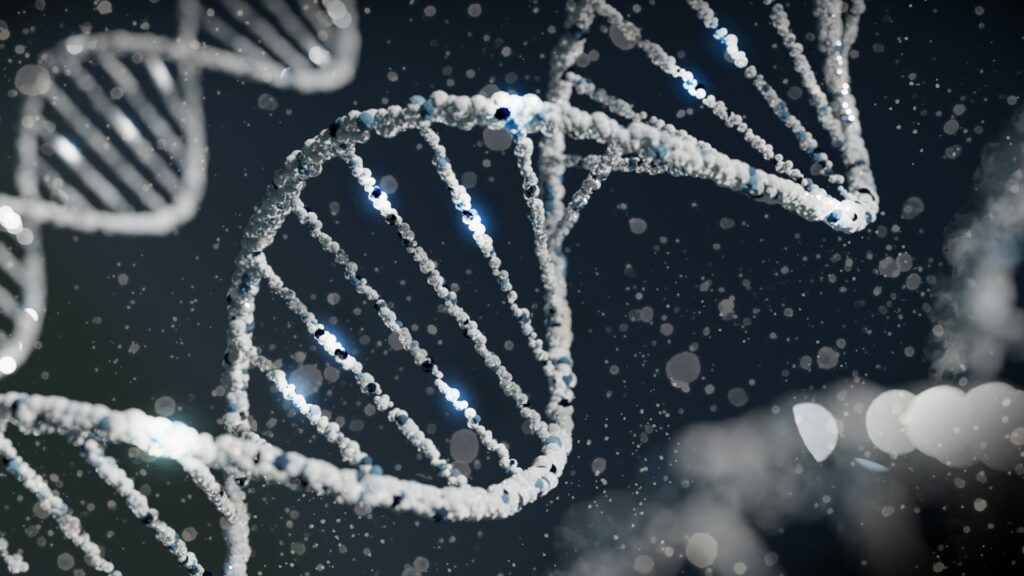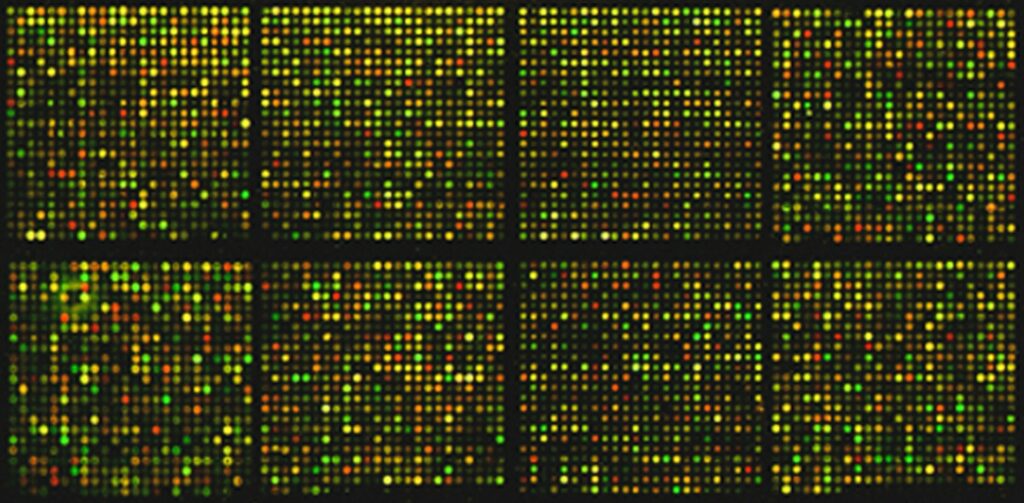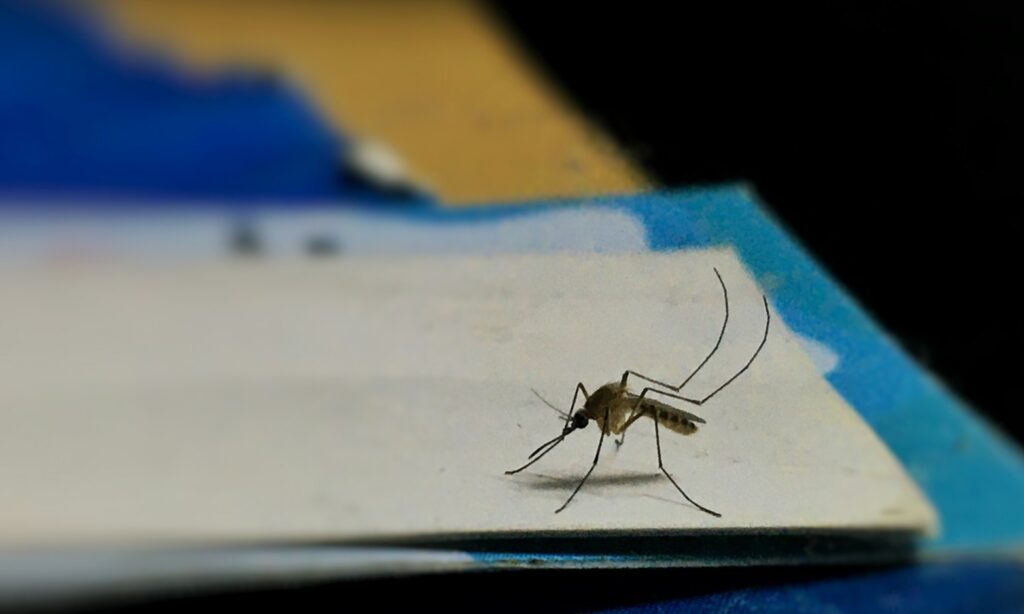News Team member Alexa Morales describes the need for new prenatal nutrition guidance to include fiber, as it promotes stronger microbiomes and better health outcomes in mothers and their babies.
Revolutionizing Genetics and Beyond
Exploring the groundbreaking advancements and ethical dilemmas of CRISPR/Cas9 in rewriting life’s blueprint.
By Saif Hossain
Victoria Gray is a 37-year-old woman whose life was at the mercy of sickle cell disease. The debilitating genetic disorder had disrupted her life since childhood, even forcing her to abandon her dreams of becoming a doctor. The recurrent, excruciating pain often left her hospital-bound for months on end, causing her to miss out on her children’s lives. She could not bear to continue living like this.
But in 2019 (as revealed by NPR and a presentation at the Third International Summit on Human Genome Editing), Victoria became the first sickle cell patient to receive CRISPR gene therapy. Doctors removed some of her bone marrow cells and, using CRISPR, edited them to produce a different type of red blood cell. They returned the cells to Gray; after eight months, her symptoms disappeared, and her pain subsided. Victoria felt reborn, and four years later her symptoms remained vanquished. She is finally able to enjoy what life has to offer, free from the burden of sickle cell disease.
CRISPR stands for Clustered Regularly Interspaced Short Palindromic Repeats. These are repeated sequences of nucleotides – chemical compounds that are fundamental units of the genetic code – that read the same forward and backward. These artifacts are found in DNA, the genetic code that governs the structure and function of all life. This discovery within Escherichia coli in 1987 unleashed a Pandora’s box of possibilities to change life as we know it. It has offered scientists and doctors a glimpse of a greater society. A future where untreatable inherited conditions can be cured. A reality where the threat of vector-borne diseases has been minimized, if not completely eradicated. A world where the threat of disease and drought to the food supply is an afterthought. And that’s only the beginning.
The ease of gene editing via CRISPR/Cas has revolutionized the field of genetics and reimagined what is biologically possible. Its growing use in medicine, pest control, and agriculture has transformed the seemingly Sci-Fi concept into reality; however, public opinion remains skeptical of its use. According to the Pew Research Center, 30% of U.S. adults believe that using gene editing to reduce disease risk in children is a bad idea, while 39% are not sure. Even with its feared downsides, CRISPR offers so many potential benefits that societies will be forced to grapple with its use.

The origins of CRISPR
“CRISPR now gives us the ability to edit the genome as a Microsoft Word document,” said Kyle Cromer, an assistant professor of surgery at the University of California San Francisco. “What CRISPR therapies are hoping to do is correct disorders at their genetic root. So, it’s correcting disease, causing mutation, and it can be a lifetime cure for people who are currently suffering from [inherited] disorders.”
Fascination with genetics in the late 20th century culminated in the Human Genome Project. From 1990-2003, the international scientific community came together to map the DNA sequence of the entire human genome. In 2005, 18 years after the discovery of CRISPR in prokaryotes (single-celled organisms without a nucleus), scientists learned that it has protective qualities, safeguarding these organisms from foreign DNA. In the same year, scientists provided the first in-depth description of Cas9, a type of CRISPR-associated (Cas) protein that recognizes CRISPR sequences and cuts them out of the DNA. Seven years later, Jennifer Doudna and Emmanuelle Charpentier discovered that CRISPR can be programmed to edit genes. In 2013, modifications to CRISPR/Cas allowed for its functional use within eukaryotes (organisms whose cells possess nuclei), granting it the ability to edit germline cell DNA. Within three decades, CRISPR has transformed from an intriguing lab discovery to the catalyst of an envisioned future, where it is deployed to alter the genes of plants and animals – including humans.
The CRISPR repeats allow Cas proteins to recognize foreign DNA. During a viral infection, guide RNA leads Cas proteins to specific sequences in the virus’ DNA. Cas proteins then act as molecular scissors, cutting these regions out of the DNA. These regions, now called spacers, are then integrated into the prokaryote’s DNA, in between CRISPR sequences. The prokaryote will now recognize the DNA if the same virus invades again and quickly neutralize it, like how our immune system recognizes diseases after an initial exposure.
Scientists then optimized CRISPR/Cas9 to cut the DNA of eukaryotes – which encompasses many bacteria, all plants, and all animals, including humans. Scientists utilized eukaryotes’ DNA repair mechanisms in tandem with CRISPR/Cas to edit, delete, and insert genes. In gene editing, modified guide RNA (complementary to a defective gene) and template DNA (containing the “correct” code) are supplied with CRISPR/Cas9. After cutting the target, the template code is copied into the cell’s DNA, thus altering the genome.
CRISPR/Cas began to enter mainstream consciousness in the mid-2010s, around when the use of GMOs (genetically modified organisms) in agriculture resulted in environmental activists holding large-scale protests and even committing vandalism. These occurred despite the safety approvals made by governments and scientists worldwide. The debate surrounding the ethical use of CRISPR reached a fever pitch in 2018 when Dr. He Jiankui and his team at Southern University of Science and Technology in Shenzhen used CRISPR/Cas9 to modify human embryos, making them less susceptible to HIV. These children were born in late 2018, prompting Dr. Jiankui to make his stunning announcement to the world: he had created the first genetically edited humans in history. Within five years of its use in eukaryotes, the world learned that mankind has the power to shape its evolution.
The ensuing fallout was immense. The illegal modification of human embryos was an international scandal. Gene editing was not needed to prevent HIV transmission from the children’s mother; in fact, Jiankui’s gene modification increased the children’s susceptibility to West Nile virus and influenza. The global scientific community was outraged, condemning Jiankui’s work and calling for a temporary moratorium on germline genome editing. Dr. Kiran Musunuru, a gene editing expert at the University of Pennsylvania, said Jiankui’s work was “unconscionable” and “not morally or ethically defensible.” Others, Like Dr. Eric Topol of the Scripps Research Translational Institute in California, said that CRISPR gene editing was too premature for clinical use. A Shenzhen court later found that Dr. Jiankui broke several laws and ignored ethical guidelines to edit the embryos. He was later sentenced to three years in prison, fired from his institution, and stripped of his credentials. China has since banned the modification of germline cells and gene editing.
However, proponents of CRISPR, such as Harvard University’s George Church, argue that Dr. Jiankui was justified. To them, it was only a matter of time before CRISPR editing made its way into medicine.
Using CRISPR/Cas in medicine
Even without germline editing, CRISPR/Cas holds immeasurable potential to treat complex diseases that afflict countless individuals worldwide. In addition to sickle cell disease, CRISPR/Cas may effectively treat patients with beta thalassemia, Alzheimer’s disease, Huntington’s disease, Duchenne muscular dystrophy, HIV, diabetes, and an autism spectrum disorder. It holds the potential to correct genetic disorders that result in blindness. CRISPR/Cas can also treat various types of cancers, such as multiple myeloma, leukemia, and lung cancer, among others. CRISPR/Cas may be the catalyst of a new future in clinical medicine, giving hope to patients like Victoria Gray who are suffering from otherwise incurable diseases.

In 2022, Cromer and his team determined that CRISPR/Cas9 genome editing is safe for use in human hematopoietic stem and progenitor cells, which are stem cells that can differentiate into any type of blood cell. This means that scientists can precisely edit these stem cells to correct blood and bone marrow disorders within the body.
“Less than 20% of people are fortunate enough to have a matched donor,” said Cromer. “And so for the 80% of people who don’t have a matched donor, you can make the patient their own donor. [You] pull stem cells out of the person with the disorder, edit them in the dish, transplant them in, and it can be even safer because there’s no chance of immune rejection.”
Currently, about 280 million people worldwide suffer from rare diseases that are genetic in origin. In the U.S. alone, 29.7 million people have diabetes, while 1.2 million above the age of 13 are living with HIV. 40,000 Americans are suffering from Huntington’s Disease, with 200,000 more at risk of inheriting the disorder. Cancer continues to be one of the leading causes of death worldwide. A tested and approved CRISPR/Cas gene editing mechanism may remedy the disease burden of hundreds of millions of people globally. For diseases with no cure or those whose treatments are highly invasive, CRISPR/Cas can save countless lives and improve the quality of life for millions more.
Scientists have also started applying CRISPR/Cas gene modification to pests. Researchers are hoping that editing vectors, such as the mosquito, will block the transmission of deadly diseases such as malaria and dengue. By making mosquitoes resistant to Plasmodium, the parasite that causes malaria, scientists can prevent the transmission of malaria via mosquito bites without disrupting the ecosystem’s food chain.
However, gene editing is not immune to one of the most significant challenges in the field of pest control: the evolutionary arms race. According to Jeffrey Powell, a professor emeritus of ecology and evolutionary biology at Yale University, both microbes and the vectors themselves can evolve resistance to CRISPR modifications, rendering them useless.
“We thought insecticides were the Magic Bullet. And it worked for a while until insecticide resistance evolved. Vaccines work for a while until resistance evolved,” said Powell. “And now CRISPR and things like that are being proposed, and that will work for a while until resistance evolves.”
From medicine to agriculture
The way to avoid the evolution of resistance to CRISPR, according to Powell, is by specifically targeting highly conserved sequences in the DNA. Because evolutionary pressure from the environment keeps these regions largely constant, edits in these areas can last for generations. These findings will be invaluable in reducing the global annual death rate from vector-borne diseases, which climbed over 700,000 in 2022.
Protecting the global food supply has become an increasingly pressing matter as the global population increases and the effects of climate change reach further into daily life. Leading agricultural producers worldwide have used GMOs for well over a decade. Now, CRISPR/Cas has emerged as a safer and cheaper method of engineering higher-quality, resilient foods21 that provide greater nutrition, endure harsh weather conditions, and resist pestilence and disease. Furthermore, governments and scientists alike have affirmed their safety for consumption.
“There are no safety concerns,” says Tadesse Fikre Teferra, a food science research associate at Texas A&M University. “Where we used to have to transfer genes into plants, we now just edit the genes we want to improve. In 2050, the global population is going to reach over 9 billion. We’re going to need food security…CRISPR technology can increase food production and enhance resistance to disease, and environmental stressors.”

CRISPR is also being used to combat crop pestilence. Insects destroy approximately 40% of global crop production annually. For example, Southern California farmers have grown weary from their endless battles against the glassy-winged sharpshooter. This insect spreads Pierce’s Disease to grape vines, causing them to wither. This disease has no cure, and its impact has been exacerbated by warmer winters in recent years. As demand for food increases while growing conditions deteriorate, producing crops that are both high-yield and resilient becomes paramount.
For CRIPSR/Cas9 to improve the lives of people, it must be used in an ethically responsible manner. The concept of “designer babies” — children that are modified to have desired traits in strength, intelligence, or appearance — is where gene modification crosses into the dark field of eugenics, the ideology that only ideal humans should reproduce. Editing embryos and babies is also morally questionable, as they are not in a position to give their consent for these procedures.
Another major hurdle for CRISPR is the issue of accessibility. Currently, CRISPR gene editing procedures are prohibitively expensive. According to Cromer, there are many instances where CRISPR therapy is accompanied by a $3 million price tag. CRISPR will not maximize its potential to benefit society if only wealthy, upper-class individuals can access the technology.
“We need to think about how [CRISPR] could be an accessible treatment for every patient suffering from the disorder,” said Cromer. Poorer patients will continue to suffer from their disease regardless of CRISPR’s efficacy. Developing countries will not benefit from CRISPR’s pest control or agricultural boost if they cannot afford to use it. However, he adds, there are potentially innovative ways to lower the cost: “It can be genome editing tools delivered in the form of mRNA packaged in a lipid nanoparticle, similar to the COVID vaccine which costs $3 per dose. This is a way that you could close that [affordability] gap.”
With responsible and fair use, CRISPR/Cas9 has the opportunity to dramatically improve the quality of life for millions of people worldwide. From treating heritable illnesses and combatting vector-borne diseases to safeguarding the global food supply in the future, gene editing technology has the power to drastically advance clinical medicine, epidemiology, and agriculture, saving countless lives in the process.

